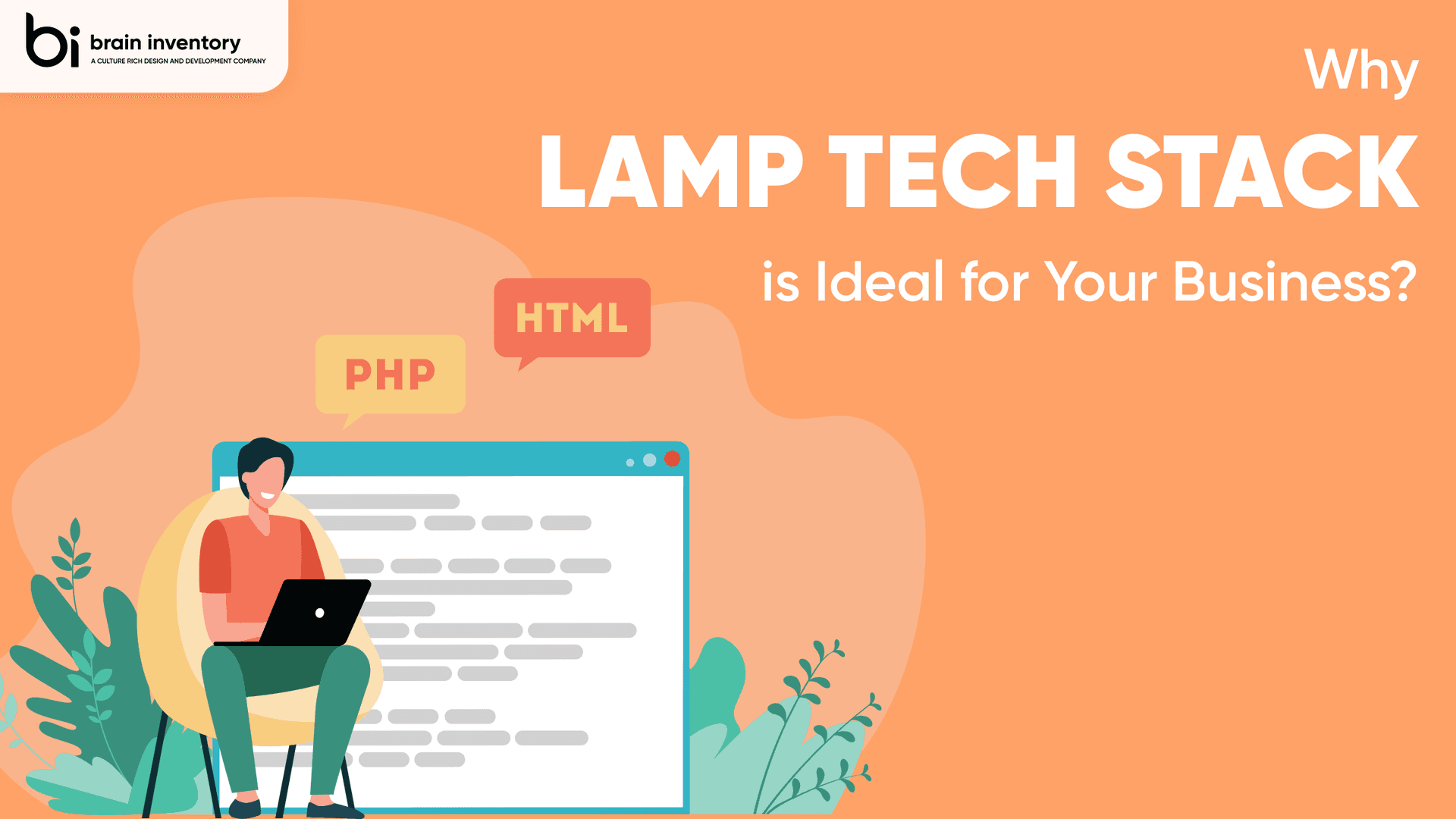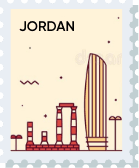Why Lamp Tech Stack is Ideal for Your Business?

Quick Summary: LAMP is short for Linux, Apache, MySQL, and PHP. These are open-source technologies that together enable you to create apps or websites. They’ve come a long way since their early days in 1998 when they were first introduced to the public by way of a Wired magazine article about a new web server called Apache. Although it wasn’t the first LAMP stack on the block – there was an earlier, more difficult-to-configure incarnation called Lamonde – it was one of the first tech stacks to offer easy-to-install alternative solutions to complex problems.
Introduction: What is LAMP Stack?
The LAMP tech stack is a widely used open-source solution stack for building websites and web applications. It is made up of Linux, Apache, MySQL, and PHP (Python and Perl are also popular in some cases).
LAMP has four components that need to be installed: Linux (operating system), Apache (webserver), MySQL (database), PHP, or Perl. These components can all be installed into a single server or there can be multiple servers.
The LAMP stack is a set of software that runs a server. Each layer in the stack is contributed by a different team or individual developer, which resulted in an open-source system that can be used to create dynamic websites and web apps.
LAMP Stack Architecture
Linux: Linux is the operating system for your web host. It’s not a fun side project. Linux is the operating system you’ll be using when setting up your hosting account, creating your databases, and building out your lists/calls to action. The flexible and customizable nature of Linux combined with the fact that it is open-source make it a popular OS solution for running the rest of the LAMP components (which we’ll talk about in just a bit).
PHP and MySQL are server-side scripting languages. The scripting part means that the code runs on a server instead of your computer. This makes it flexible and compatible with a number of hosting providers and servers. It also needs to be configured and pointed toward a database (such as MySQL) located on a server.
Apache: A web server is a software that serves data to clients through the World Wide Web (WWW). The most commonly known web server is Apache HTTP Server, the world’s most-used web server. The software can be run on top of the Operating System kernel along with Apache, as a module of an operating system, or as a standalone solution in the LAMP stack.
The Apache HTTP Server Project is an effort to develop and maintain an open-source HTTP server for modern operating systems including UNIX and Windows.
MySQL: MySQL is cross-platform compatible. This feature qualifies it to be part of the web development stack (LAMP). One can opt to install Apache, PHP, and MySQL coupled with a Linux distribution, thereby making an ideal solution for creating dynamic enterprise-level websites.
MySQL is one of the most popular open-source relational database management systems. It has a broad ecosystem of solutions that facilitate developing Web applications, which makes it the most appropriate choice for startups or projects with limited funds. MySQL has been around for 20 years and has been on the market for longer than MongoDB.
PHP: PHP is a scripting language that builds upon HTML and provides additional command instructions (functions) to execute in the server-side code. It can interpret both scripts and HTML, allowing PHP to create web pages in addition to providing functionality for server-side operations. However, it has no graphical interface and is only compatible with certain web browsers. PHP instructions are embedded into HTML files using special tags.
Many beginners start with PHP. Its simple syntax makes it easy to learn for learners, which is why PHP is the most widely-used programming language in the world. It is a server-side scripting language that interacts well with MySQL, the third layer of the original stack. This makes it a convenient choice for web development because you can use its dynamic typing and embedding into HTML to work faster and more efficiently.
LAMP Stack: A Powerful Web Development Solution
The Linux-Apache-MySQL-PHP (LAMP) software stack, is one of the most popular combinations of open-source software used for building and delivering web-based applications. Built off the Linux operating system, the LAMP stack has become ubiquitous amongst both small and large developers due to its flexibility and efficiency in deploying and scaling web applications.
LAMP is an acronym that refers to software used to build website programs or services that are based on the Linux operating system. LAMP was coined based on the first letter of each content-management program, which includes Apache, a web server; MySQL, a database application, and PHP, a server-side scripting language. These four components were picked as optimal solutions for developers who wish to host, serve and manage web-based content.
Benefits of LAMP Tech Stack
LAMP is a set of open-source technologies that have become popular in the development community for their ease of use, cost-effectiveness, and ability to provide a scalable software solution.
Flexibility
LAMP is an acronym standing for Linux, Apache, MySQL, and PHP. It represents a software bundle to create dynamic web pages. While LAMP has many advantages over other technologies, it also comes with the flexibility of choice when selecting components that make up the stack.
Efficiency
The lamp is an open-source that allows a developer to build websites using Linux, Apache, MySQL, and PHP. Though it has been around since the late 90s, LAMP is a great option for website development because of the plethora of resources available online to help developers learn how to deploy it. It also comes at a reasonable cost.
Capability
Web developers have a variety of development stacks to choose from. One of the most widely used stacks is the Linux, Apache, MySQL, Perl/PHP/Python (LAMP) stack. LAMP stacks are used to build dynamic websites that offer a broad range of features for users and businesses.
Conclusion
LAMP stands for “Linux, Apache, MySQL, PHP.” This is a powerful combination of open source software-many businesses run on. LAMP was created as an alternative to proprietary, Windows-based solutions. It is designed to provide a stable, secure, and flexible technology platform that helps you meet business requirements. Brain Inventory is one of the leading software development companies who have a remarkable clientele across the globe. Our modules & features are highly tailored to suit your business needs and we go above and beyond to simplify them with utmost feasibility and effectiveness. We have a team of experienced mobile app developers in India who can develop the app you want for the best price. Hire lamp developers with us at Flexible hiring models.

Have an idea?
Get in touch, we’d be
happy to hear from you
We are always looking out for new collaborations, whether you are a client who is passionate about a project or a talent who is interested in joining our team, our doors are always open.
locate us

India (HQ)
618, Shekhar Central, Palasia Square, A.B Road, Indore, Madhya Pradesh, 452001
+918109561401

United Kingdom
Brain Inventory, SBVS, 8 Roundhay Road, Leeds, UK, LS7 1AB
+18008209286

Canada
44 Main Street East Milton, ONCanada L9T 1N3
+4166696505

Jordan
185 Wasfi Al-Tal Street, Ammon Oasis Complex P.O Box 4724 Amman 11953 Jordan
+960770781000

USA
720 Seneca St Ste 107 Seattle, USA 98101
+1(206)6533419
if it's digital,we'll make it.
- Numetric - Online Accounting Software similar to QuickBooks
- Bloomia - Kegel exercise
- Virifi - Blockchain Powered Document Certification & Signing Platform
- Revolution Travel CRM - Custom CRM Built for Travel Agents
- Fatoura - Online Invoicing Platform
- My Fit Mantra - Your health partner
- Ocureel - Relation Building and video sharing Application